Note: Some of the students interviewed speak Spanish as their first language. An English translation will be included alongside their responses. Para ver la versión en español, haga clic aquí. (To view the Spanish version of this article, click here.) Students filter into class, chatting animatedly. The large majority of the class speak Spanish as their first language; out of the other four students, three speak English, and one Vietnamese. People settle into their seats, ready to take a guess at the “Track of the Day” posted on the board.

This class is unlike the classics – instead of math equations or historical facts, students learn how to tie knots and recognize the symptoms of hypothermia. In CAP (Community Adventure Program), currently taught at five schools across the state, three of which are in BVSD, students receive an environmental and social education. The curriculum combines hands-on activities and education on a variety of environmentally related topics with leadership skills, action projects, and problem-solving. And, in recent years, students taking CAP at Centaurus are receiving another invaluable lesson: how to connect with each other, across interests, backgrounds, and languages.
The class fulfills a general elective credit requirement, although it really provides much more than that. It combines interdisciplinary environmental education with service-based learning and is designed to get students engaged with their peers, passionate about local environmental issues and their solutions, and connected to nature. Over the course of the semester, “students [participate in] lectures and group discussions, complete reading and journal assignments, go on [field trips]… and design and implement an environmental service-learning project as a class,” according to the description of the course in the BVSD High School Course Catalog. So far this semester, students have learned how to identify tracks, recognize the symptoms of hypothermia, build snow shelters, and much more. Students also participated in an all-day snowshoeing trip on February 2nd, one of the two mandatory trips per semester.
The program, which is run through the Cottonwood Institute, a local non-profit that provides a variety of outdoor learning programs, has been available in BVSD for almost 8 years. It began as part of a Great Outdoors Colorado (GOCO) grant intended to fund programs across the state that were connecting youth to the outdoors. Erin Angel, the coordinator and teacher of the program for BVSD, stated that the entire cost of the program is currently funded via a combination of state grants and fundraisers run by the Cottonwood Institute – the program is entirely free for all students. “You don’t have to buy new socks, you don’t have to buy snacks, you don’t have to have a water bottle; we supply everything,” she said. Brands like Patagonia occasionally donate outdoor gear like snow pants or gloves to the program. This allows for greater accessibility, ensuring that anyone who wants to take the class has the option to.
In recent years, the class has become increasingly integrated with the Newcomer Program, which helps students who are new to the country learn English and get accustomed to the school and has become so successful that other districts are now using it as a model for their own curriculum. Angel, who teaches “about 110 students in BVSD per year” across CHS, New Vista, and Angevine, explained that, although CAP wasn’t originally intended as part of the Newcomer Program, the link between the two developed naturally. “The population we like to connect to nature is everyone, but a lot of times people from backgrounds that might not be as privileged in a lot of ways don’t get to be outdoors as much. [For example], if [someone’s] parents work 7 jobs and can’t take [them] outside, or they don’t know about the outdoors, or they’ve just arrived to the U.S and it might be scary [for them].” Earlier in the class’ history, enrollment was lower due to a lack of awareness about the program. “We were thinking, how do we get this out there?” said Angel. Then they invited the newcomer class to join a service project, where students assisted in tree planting along Coal Creek. “The newcomers had such a great time that we were all just like, aha! Let’s integrate and let’s do it together,” she said. “Now it’s really changed the program and how we do things at Centaurus… it really is a [focus] of our program.”
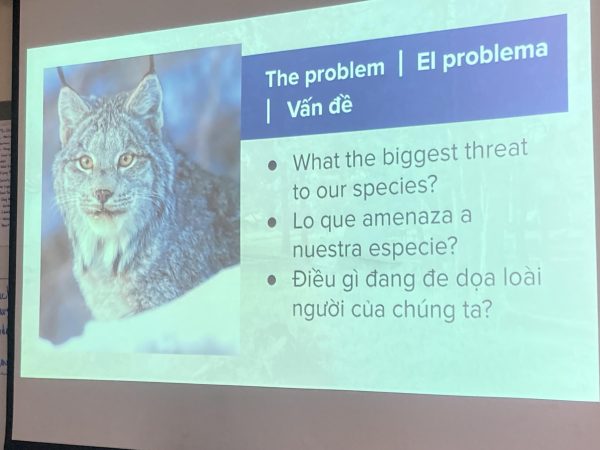
Now, CAP is taught bilingually, with Angel and a few English-speaking students assisting in translating the activities. For the students, it’s a win-win scenario; the newcomers get more practice with English, and the English speakers get to learn some Spanish. And everyone gets practice building friendships. Jesse Holtshnider (’24), who has taken the class twice now, said “…I am interacting in a significantly higher capacity with non-English speaking students then I normally would outside of this class.” Holtshnider is essentially a Teachers Assistant for the class this semester. “[It’s] been a very engaging experience and has put my currently poor Spanish skills to the test; it has absolutely strengthened them.”

Photo courtesy of Erin Angel.
In order to build relationships, students participate in a variety of bonding exercises. “Algunas de las dinámicas es recordar el nombre de los compañeros, y el equipo que diga primero el nombre del [otro] compañero gana (Some of the activities are to remember the name of classmates, and the team who says the name of the [other] team’s player first wins),” said Ignacio Precadio Gutierrez, a freshman taking the class this semester. Another activity the class has done is a game called “common ground” in which students were split into pairs and asked to find two, non-visible things they had in common – things like favorite foods, interests, or how many siblings they have. After the first round, the groups then gradually increased in size, until the entire class had to find something they had in common. They discovered they all liked ramen (which led to the class choosing it for their lunch food on the snowshoeing trip later in the semester). Gutierrez stated that the class, especially the trip, has provided him with good opportunities to make friends. He described bonding with another student during the trip while they were constructing a giant snowball “para hacer un refugio para la guerra [de nieve] (to make a shelter for the [snow] war).” “Me beneficio porque conseguí un nuevo amigo que habla otro idioma (I benefited because I have a new friend who speaks another language), ” he said. “Es un poco difícil comunicarnos, pero lo hacemos lo mejor posible ambos (It’s a little difficult to communicate, but we both do it the best we can.)”

Other students have had similar experiences. Michelle Melara (’27) said “[Estoy aprendiendo] de como cuidar el medio ambiente y de tipos de huellas, y también a convivir con todos los de la clase. También me ayuda a descubrir cosas que nunca había visto y me parece super bien ([I’m learning] how to take care of the environment and different types of footprints, and also to coexist with everyone in the class. It also helps me discover things that I’ve never seen before and I think it’s great.)” She said her favorite part of the snowshoe trip was the snowball fight that began while the students were building a snow shelter, which they named ‘Juanito Pepito’. “Y también cuando Dany y Leo [y yo] estábamos haciendo el muñeco de nieve. (and also when Dany and Leo [and I] were making a snowman),” she added. Dany Morales, another freshman, said his favorite part was “cuando todos nos pusimos a decir ‘Maruchan! Maruchan!’ [durante el almuerzo] (When everyone started chanting ‘Maruchan! Maruchan!’ [during lunch]).” – ‘Maruchan’ referring to the beloved ramen they had chosen for lunch. “No importa que hables diferente idioma. Igual te puedes divertir y tus maestros te pueden enseñar. (It doesn’t matter if you speak a different language. You can still have fun and your teachers can still teach you.),” he said.
Angel said that experiences like these are not rare occurrences, but rather a dependable benefit of taking the class. “It’s really tough to be in the lunchroom and approach someone who looks different from you or speaks a different language or is from a different background or even is just from a different friend group,” she said. “[In CAP] I’ve seen students connect to each other and make friends, especially making friends across some of the divides we see according to race/ethnicity and economic status… by the middle of the class everybody is friends.” She believes that having a “wider friend base” is better for people – especially for high school students, who have lost important social time to COVID-19. “[people you meet in the class] may not be your best friends, but they are part of your friends and it helps,” she said.
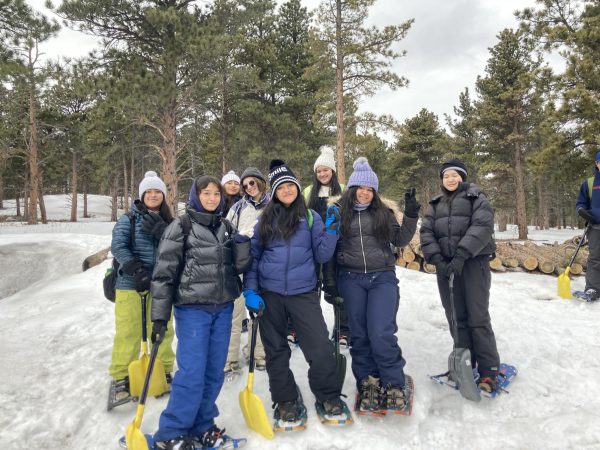
Of course, the traditional aspects of the class are also impactful. For many of the students, the snowshoe trip was their first time really being in snow (aside from an earlier snowball fight the class had had during a block period). The students went to Caribou Ranch Open Space, near Nederland. They learned how to layer properly, how to put on snowshoes, and how to construct a Quinzee (a type of snow shelter used by indigenous populations in Canada.) They were able to fit more than 10 people inside their completed shelter. “Me di cuenta que si entrabas al refugio, no hacía frío, aunque estaba hecho de hielo y nieve. (I realized that if you went into the shelter, it wasn’t cold, even though it was made of ice and snow),” said Misheel Cunyas, a freshman. The snow walls, nearly a foot thick, insulate the user from the cold air outside, trapping body heat and eliminating any wind chill. In sub-zero temperatures, the inside of the Quinzee could be nearly 60 degrees warmer than the outside conditions. They can be used as an overnight shelter in winter conditions. Nhi Nguyen, a freshman, said the experience was very memorable for her. “…Enjoying the soft white snow everywhere, then building a warm and safe tent from [that same] snow and…[the] fun games and group bonding in the pristine space of the snowy mountains all made the trip more memorable and meaningful than ever.”
Angel stated that her favorite part of the semester so far was hearing one of the students enthusiastically proclaim their new love of snow during the trip. “We were digging out Quinzees and people were having a snow war at the same time. And around the corner I hear Dani say ‘¿Cómo se dice nieve en inglés?’ (‘How do you say ‘snow’ in English?’) and someone said “snow” and then all the sudden I heard him yell ‘I love you, snow!!!’” She laughed at the memory. “I hope I never forget that because it makes my heart full and exploding and snowy.”

She encouraged students to sign up for the class for next fall, emphasizing the importance of outdoor education. “We’re so disconnected [from nature] now, and I think it’s the root of so many of our mental health problems and so many of society’s problems… And even small doses of nature, even just looking at a dandelion outside your front door, you can feel a lift, it definitely is a stress reliever.”
When describing the class, Ignacio Guiterrez said it well: “Los objetivos son conectar con la naturaleza y con las personas (The objectives are to connect with nature and with people).”
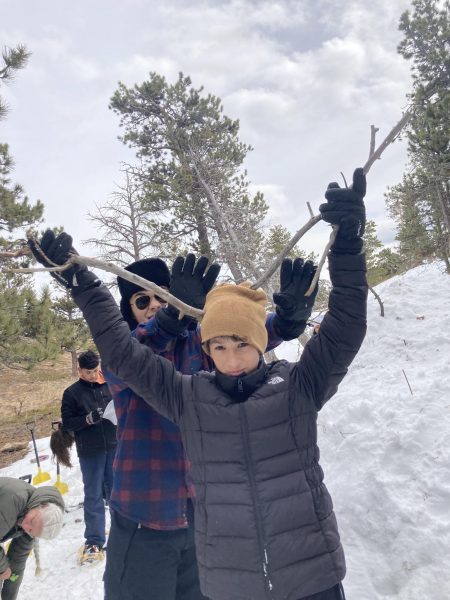
To sign up for the Community Adventure Program, look for it under the ‘general electives’ category during course selection.









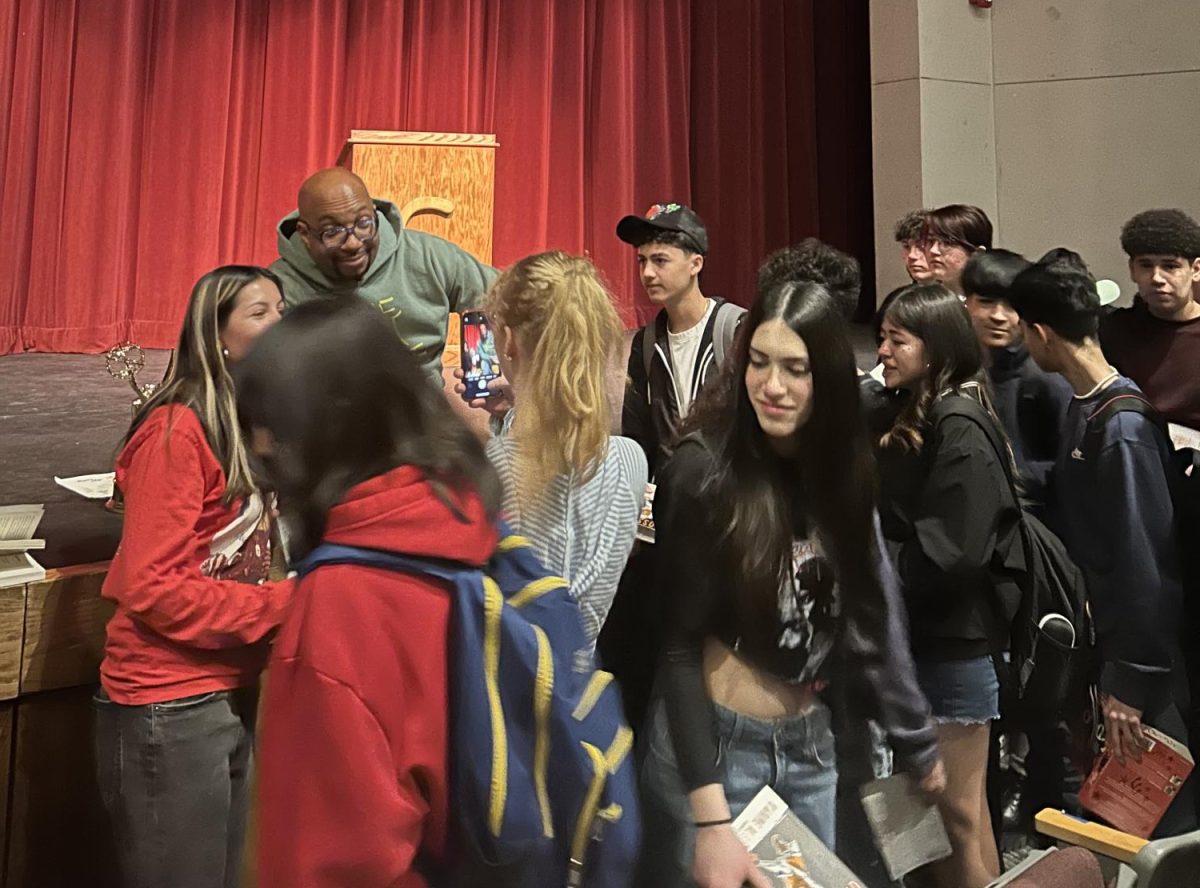

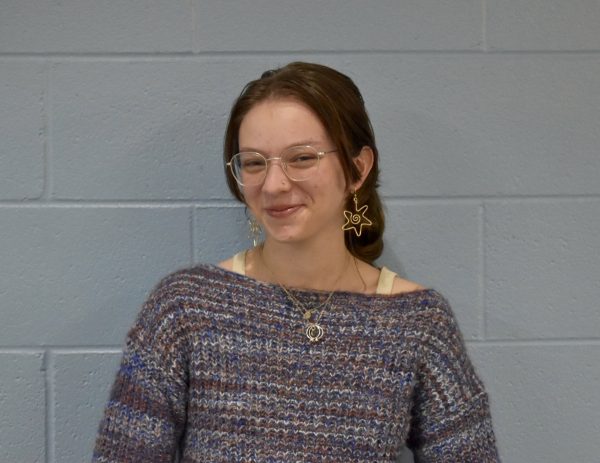
J Mearkle • Mar 29, 2024 at 6:40 pm
What a well written article and an incredible program! So encouraging to see classes like this that highlight the importance of connecting to both nature and eachother. Well done!